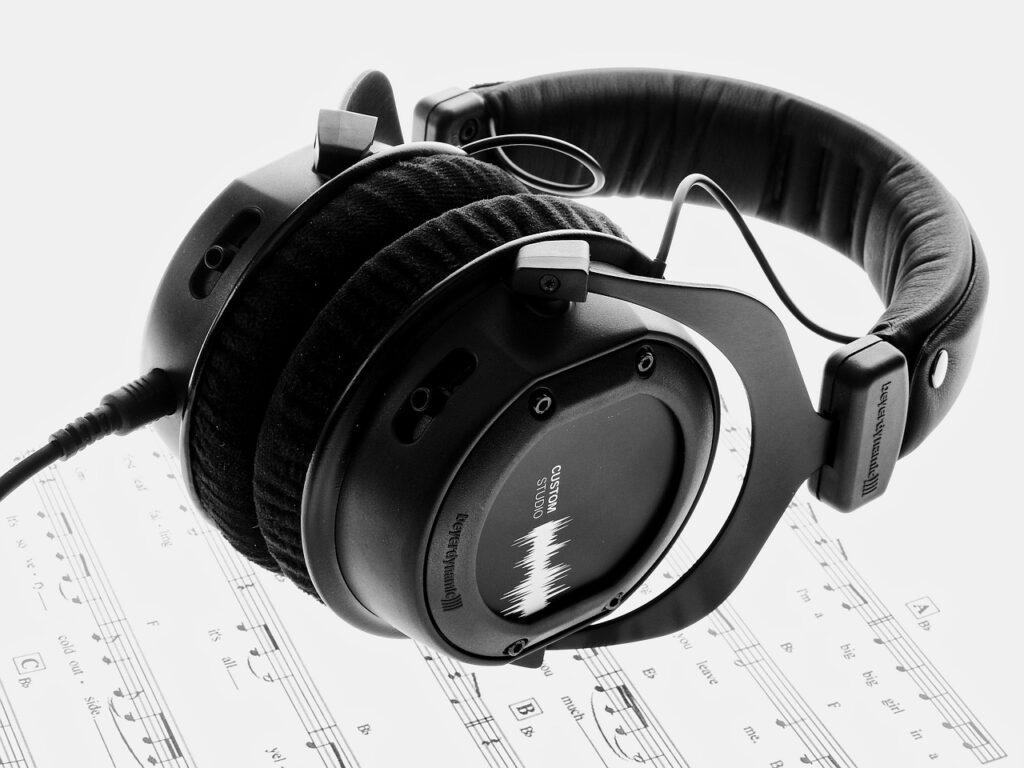Sing

The archive contains posts about learning to sing.
Sing
“If you can talk, you can sing. If you can walk, you can dance.”
An Old Zimbabwe Proverb
So, is it just opening your mouth and making sound?
Well… yes and no.
Anyone who can make sound can produce a melody. Even infants make pre-melodic sounds. However, have you ever wished to be better at it?
With coaching, you can make your melodies stronger. With coaching, you can to train yourself to sing in tune.
In the posts in the Singing in Tune and Shape Notes and Solfege blog categories, you will learn how to:
- Produce a better and more powerful tone
- Harmonize in tune
- Tune up your melodies
- Phrase the music
- Make the words more understandable
- Read sheet music (called sight reading)
- and more …
The Singing in Tune blog category focuses on harmonizing in tune. Based on cutting edge intonation research, Success Music Studio has created specially tuned sing-along songs. The sound files help foster a cappella level vocal tuning.
Alternately, Shape Notes and Solfege works on sight reading and melodic tuning. As the title of the category implies, we use shape notes combined with solfege (Do, Re, Mi) for sight reading. At the same time, solfege creates a sound model for tuning up melodies when used with the sing-along songs.
We will explore phrasing music, vocal tone, and intelligible text in either or both of the blog categories.
Have fun!
© 2021 Geoffrey Keith
Back to the Successful Music Student Blogs page
Do you want to be able to sing with an a cappella group while having both great tone and tuning? An a cappella group is an ensemble that performs without instrumental accompaniment. This allows your group to lock in the harmonies, which helps achieve the distinctive vocal blend you find in this style. How do you do this? Through ear training and physical skills instruction. Keep reading “Where Do I Start if I Want to Be Able to Sing A Cappella?” to learn the essential skills you’ll need. Estimated reading time 4 minutes.
Where Do I Start if I Want to Be Able to Sing A Cappella? Read More »
Do you want to sing Deck the Halls? In this post, you’ll get the essentials: 1) a video of Deck the Halls, 2) the full lyrics, and 3) easy-to-read shape note sheet music with a sing along song track. Keep reading “Deck the Halls – A Jubilant Christmas Carol” to learn more. Estimated reading time 2 minutes.
Deck the Halls – A Jubilant Christmas Carol Read More »
Do you want to be able to sing better? Do you need some singing vocal exercises? It doesn’t matter if you want to do opera singing, backing vocals, choir singing, or just want to work on your singing voice. The sing along song tracks will help you improve. Keep reading to learn how they work. Estimated reading time 2 minutes.
Singing Vocal Exercises Read More »
Do you want to know the words to the spectacular US Star Spangled Banner? Would you like to learn how to sing or play it? In this post, you’ll get the essentials: 1) all four verses for The Star Spangled Banner song lyrics, 2) a video of Whitney Houston’s version of the song, and 3) easy-to-read shape note sheet music with a sing along song track. Keep reading to learn the American national anthem lyrics and music. Estimated reading time 3 minutes.
The Spectacular US Star Spangled Banner [Lyrics, Song, & Video] Read More »
Do you want to sing Silent Night? In this post, you’ll get the essentials: 1) three videos, 2) the full lyrics, and 3) easy-to-read shape note sheet music with a sing along song track. Keep reading The Beautiful Silent Night Carol [Videos] to learn more. Estimated reading time 3 minutes.
The Beautiful Silent Night Carol [Videos] Read More »
Do you want to learn to sing? Do you need help with hearing and singing intervals? Being able to hear musical intervals is a valuable skill. You can use it for identifying intervals, which is an essential skill in vocal sight reading. Also, it’s important for singing melodies in tune. Read more to learn about singing intervals. Estimated reading time 2 minutes.
Singing Intervals Read More »
Do you have a hard time singing rhythm? Would you like to be able to keep time? Music has many aspects, but none so fundamental as notes and rhythms. Without them, the music doesn’t go. However, many vocalists struggle with singing in time. In “Singing Rhythm” we’ll look at different ways to help train you to perform accurately. Estimated reading time 2 minutes.
Singing Rhythm Read More »
Anyone can learn to sing, including you. An old Zimbabwe proverb says, “If you can walk, you can dance. If you can talk, you can sing.” So, if you can talk, why don’t you give singing a try? Read more to find out how it works. Estimated reading time 3 minutes.
Anyone Can Learn to Sing, Including You Read More »
“What precisely is the purpose of solfege?” Solfege has an important role in music education, allowing vocalists to develop sight singing skills. A solfege syllable acts as a mnemonic device to help you sight read sheet music. Read more to learn why they invented solfege and how the syllables work. Estimated reading time 2 minutes.
What Precisely Is the Purpose of Solfege? Read More »











